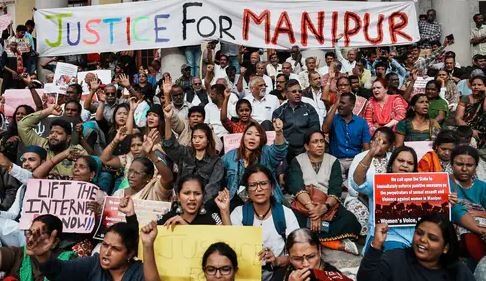The INDIA alliance protest is set to organize statewide protests in Jharkhand on Tuesday, August 2, in response to the disturbing Manipur viral video incident, wherein two women were paraded naked in the strife-torn northeastern state. Alongside condemning the incident, the opposition bloc will also call for the implementation of President’s Rule in Manipur.
State Congress chief Rajesh Thakur informed media personnel, as quoted by PTI, that demonstrations will be held near Raj Bhavan in Ranchi and other district collectorates on August 1 to voice their opposition against the heinous act in Manipur. Furthermore, the opposition leaders plan to submit a memorandum to the President via the Jharkhand governor, urging immediate imposition of President’s Rule in the northeastern state.
Thakur strongly criticized the BJP-led double-engine government, holding them responsible for the escalating violence in Manipur. He accused both the Central government and Manipur’s leadership of failing to prevent crimes against women in the region, stressing that the INDIA alliance cannot tolerate further assaults on women in Manipur.
The decision to stage protests and demand President’s Rule was made during a meeting attended by prominent figures, including Parliamentary Affairs Minister Alamgir Alam, senior Congress leader Bandhu Tirkey, Rajya Sabha MP from JMM Vijay Hansda, senior JMM leader Vinod Kumar Pandey, Jharkhand JD (U) president Khiru Mahto, RJD’s Rajesh Yadav, CPI’s Ajay Singh, and Janaradan Singh from CPI (ML).
The ongoing ethnic clashes in Manipur began on May 3, following a ‘Tribal Solidarity March’ held in the hill districts to protest against the Meitei community’s request for Scheduled Tribe (ST) status. Unfortunately, the violent confrontations have resulted in over 160 fatalities and several hundred injuries.
Manipur’s population comprises Meiteis, representing around 53% of the total population and primarily residing in the Imphal Valley, and Tribals, specifically Nagas and Kukis, who constitute slightly over 40% of the population and live in the hill districts.
